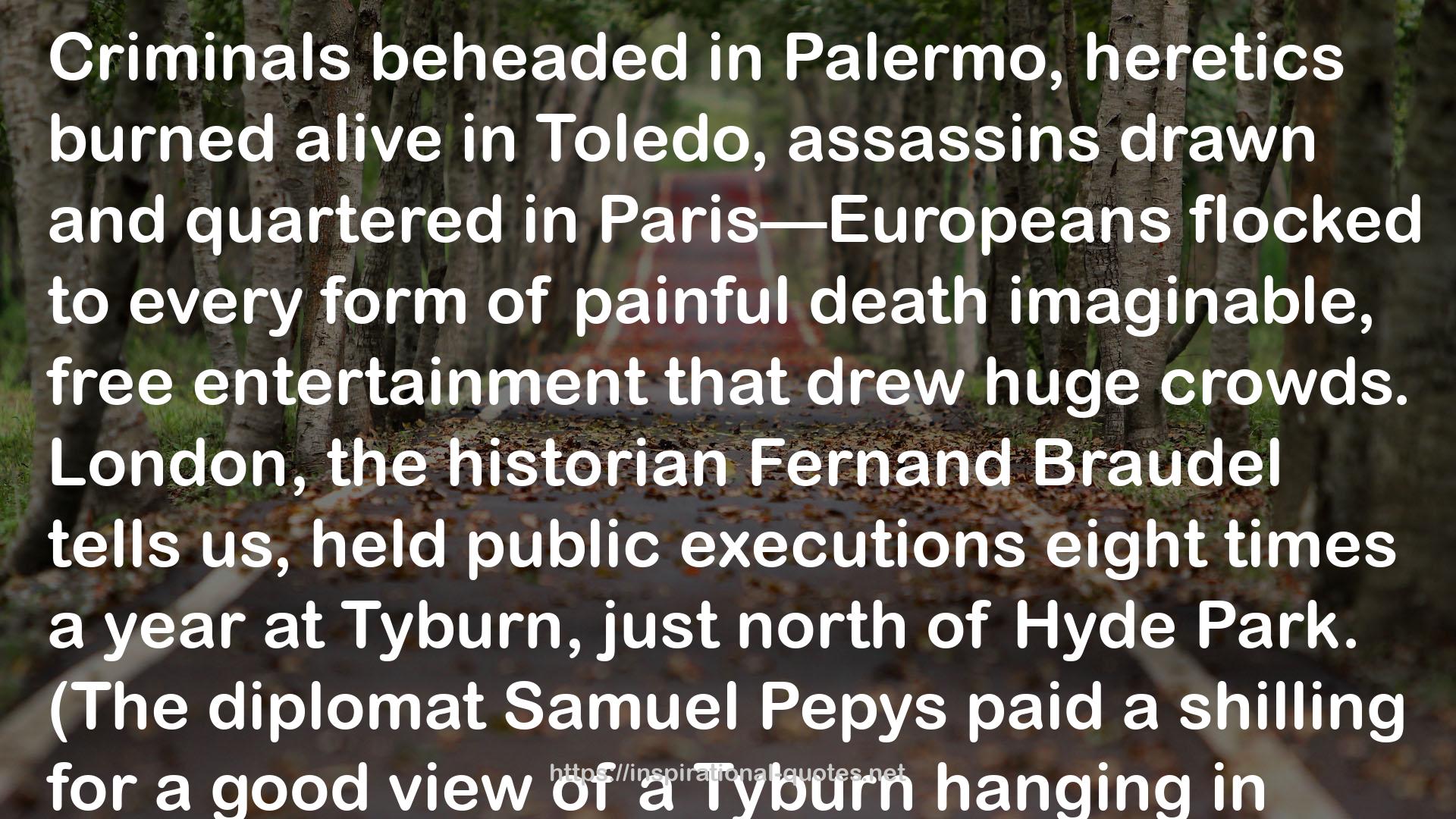" Criminals beheaded in Palermo, heretics burned alive in Toledo, assassins drawn and quartered in Paris—Europeans flocked to every form of painful death imaginable, free entertainment that drew huge crowds. London, the historian Fernand Braudel tells us, held public executions eight times a year at Tyburn, just north of Hyde Park. (The diplomat Samuel Pepys paid a shilling for a good view of a Tyburn hanging in 1664; watching the victim beg for mercy, he wrote, was a crowd of " at least 12 or 14,000 people." ) In most if not all European nations, the bodies were impaled on city walls and strung along highways as warnings. " The corpses dangling from trees whose distant silhouettes stand out against the sky, in so many old paintings, are merely a realistic detail," Braudel observed. " They were part of the landscape." Between 1530 and 1630, according to Cambridge historian V.A.C. Gatrell, England executed seventy-five thousand people. At that time, its population was about three million, perhaps a tenth that of the Mexica empire. Arithmetic suggests that if England had been the size of the Triple Alliance, it would have executed, on average, 7,500 people per year, roughly twice the number Cortes estimated for the empire. France and Spain were still more bloodthirsty than England, according to Braudel. "
Tags: EightEuropeanCambridgeFernand BraudelTyburnSamuel Pepysat least 1214,000Braudelseventy-five thousand
Image for Quotes
